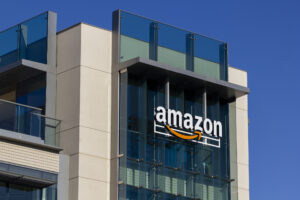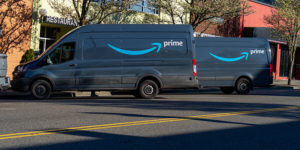Returns News
Retail Returns Are Down, But Will Consumers Abide Stricter Return Policies?
While returns are down, opposing expectations of what the process looks like are emerging between consumer and retailers. Is there a path forward?
Are ‘Just Keep It’ Return Policies Loyalty Builders?
“Just keep it” return policies, or returnless returns, are a controversial retail practice. Do they actually build loyalty?
Can In-Store Returns Get Less Clunky?
A new survey finds retailers still struggling with the extra costs and new workloads created by processing in-store returns while barely benefiting from returnees making an add-on purchase. What do you see as the pain points and solutions to in-store returns?
Are Retailers To Blame for Return Abuse?
A new survey finds consumers believe retailers are at least partly responsible for fraudulent returns. What paths do you see to reducing the practices of wardrobing or bracketing that drive return abuse?
Should Kohl’s Stop Accepting Amazon Returns?
Kohl’s has temporarily stopped accepting Amazon returns at some stores. Should the retailer spread this to all locations permanently?
Kohl’s Has Stopped Accepting Amazon Returns at Some Stores
Some Kohl’s stores will no longer take Amazon returns.
Poshmark Partners With Loop, Turning Returns Into Resale: Will Retailers Follow Suit?
Poshmark and Loop are kicking off a new returns platform. Will this method gain traction across the retail sector?
The Retail Industry Braces Itself For ‘Returnuary’
Returns have become a headache for retailers and shoppers in “returnuary.”
Should REI Be Banning Serial Returners?
REI recently confirmed that it was banning a small fraction of frequent returners from making any more exchanges or returns. The outdoor retailer is known for its customer-friendly return policies, allowing returns for a replacement or refund within one year of the purchase date for co-op members or within 90 days for non-members. REI said…
Who’s Making the Best Decision for Holiday Returns: Walmart or Amazon?
Holiday returns can make or break a customer’s shopping experience, and with competition fierce, retailers are looking for ways to balance convenience with profit protection. What strategies can retailers use to do so while enhancing customer satisfaction during the holiday season?
Can Amazon’s Return Policy Be Improved Any Further?
Returns are a major issue in the world of retail, both from a consumer’s perspective as well as a seller’s. What strategies can sellers adopt to balance customer satisfaction with the costs associated with product returns?
Are Stricter Return Policies Worth It?
A recent survey found that tighter return policies are starting to deter consumers from making purchases, particularly younger ones. Do you see better ways for retailers to protect their margins while maintaining a customer-friendly returns experience?
Is Accepting Amazon Returns Paying Off for Stores?
A Washington Post article claims programs enabling Amazon customers to return merchandise to Kohl’s, Staples, Whole Foods, Amazon Fresh, and The UPS Store locations for free are “turning store associates’ jobs into a retail horror story.” Do the gripes by store workers appear valid?
Should All Retailers Offer Instant Refunds?
Reshop is changing things up when it comes to the refund process by offering instant refunds, bypassing a traditional waiting period that consumers have come to expect. How might instant refunds influence long-term customer loyalty and retail profitability?
Can Doorstep Returns Streamline the Returns Process?
Many retailers are increasingly seeing advantages in speeding the returns process by picking up packages from customers’ homes. Can doorstep returns be a better way to manage the costs and environmental toll of retail returns?
Should More Retailers Be Accepting Third-Party Returns?
A university study finds that partnerships involving physical stores accepting returns from other retailers or brands “can be a win-win.” Should significantly more retailers be open to accepting returns from and allowing returns to third-party retailers?
Could Avatars Be the Solution To Reducing Returns?
A recently introduced digital twin fit predictor tool for luxury consumers allows them to virtually try out items based on their actual appearance and measurements. This innovation has the potential to significantly reduce returns.
Should Retailers Be Cracking Down More on Wardrobing?
Retail returns abuse is steadily climbing in part because consumers are increasingly comfortable taking advantage of flexible return policies to engage in wardrobing or bracketing. What paths do you see to reducing these practices?
Amazon Fashion To Launch AI Fit Tool To Reduce Returns
Amazon is planning to improve online fit by using AI to reduce the number of returns.
Are the Shorter Holiday Return Windows Necessary?
Seeking to reduce the high cost of returns, retailers are shortening the time customers have to bring back merchandise after the holidays. Do you generally lean toward more stringent or generous return time limits?
Where Can Artificial Intelligence Help Minimize Returns?
Emerging artificial intelligence is promising to reduce the elevated rate of returns online. Where will AI likely be most beneficial in reducing product returns?
Are ‘Bin Stores’ an Optimal Way To Liquidate Returns?
“Bin stores” continue to gain significant local media coverage as a way for consumers to score jaw-dropping bargains as well as for stores to offload returns. Has their arrival been more of a net positive or negative for retail?
Should Retailers Embrace ‘Keep It’ Return Policies?
More and more retailers are offering “keep it” policies for returns that aren’t financially viable to ship back this holiday season. Do you see more pros than cons in these policies?
Are Stores Set Up To Handle a Wave of Online Returns?
With many retailers no longer offering free online returns, in-store returns promise to see an uptick. Are stores ready?
Can Uber Help Reduce Return Anxiety?
Uber has rolled out a new “Return a Package” offering that lets drivers pick up consumers’ return packages and drop them off at a local post office, FedEx, or UPS. Will this appeal to enough consumers at the price of $5 for up to five packages?
New Uber Package Delivery Feature Lets You Send, Return With USPS, UPS or FedEx
Uber has launched a new “Return a Package” feature allowing users to send up to five prepaid and sealed packages to…
Should H&M Have Joined the Bandwagon Exiting Free Online Returns?
H&M is the latest fashion retailer in the U.K. to charge to return online purchases amid a broader push across retail to tackle escalating return costs. Has it become more evident that charging for shipping has to be a primary way to reduce the cost of returns?
Are Generous Coupon and Return Policies Hurting the Bottom Line?
The cost of returns is weighing on retailers’ bottom lines, to the point where 67% said they generally make back less than half the value of returned items. What do you think the best approach to fighting promotion and returns fraud is for retailers?
Amazon Customers Lodge Class Action Over Charges for Returned Goods
Amazon is facing a proposed class action lawsuit from customers who allege they were wrongfully charged for purchases that were returned…
Are Retailers Still Shortchanging the Post-Purchase Experience?
A whopping 83% of U.K. consumers believe the online post-purchase experience could be significantly improved, but only 18% of U.K.-based retail leaders agree, according to a new study. What annoys consumers the most about the online post-purchase experience?
Will Old Navy’s “Kid-Proof” Guarantee Boost Back-to-School Sales?
Old Navy is offering a one-year “Kid-Proof” return guarantee for uniform styles purchased during the upcoming back-to-school season that “don’t stand up to the wear and tear of a school year.” What do you think of Old Navy’s guarantee?
Could More Returns Lead To More Customer Retention?
With many companies trying to dissuade returns, the retailers that are doing the opposite stand a good chance of not only retaining their customers but attracting new ones. How else can retailers strike a good balance between accommodating customers and managing returns?
Retailers’ Attempts To Dissuade Returns May Impact Brand Loyalty
The tension between retailers and shoppers is growing, and it’s because of returns.
Will Gift Cards And Exchanges Cut The Cost of Online Returns?
University research posits that offering product exchanges or gift cards for returns rather than crediting a customer’s card may be retail’s best option to reduce the cost of online returns. Consumers were found to be more open to spending money again with a retailer when consumers chose to accept an exchange or gift card rather than just get the money back.
Will Customers Shop Somewhere Else If Retailers Charge For Returns?
New research suggests that retailers should think twice before charging customers for returning online purchases.
Will Amazon Customers Revolt Over Return Fees?
Amazon.com has begun charging return fees on products brought to the UPS Store.
Will Amazon’s Warning About ‘Frequently Returned’ Items Make It More Popular Than Ever?
Amazon.com may have devised a partial solution to curb the amount of product returns it receives: labeling “frequently returned” items in its online marketplace.
Are Retailers Getting Returns Under Control?
Many online apparel retailers have implemented or are planning to implement new AI technology that should help with sizing to eliminate bracketing (people buying more than one size).
Target makes it easier for customers to stay in their cars
Target’s customers will be able to return most new, unopened items within 90 days of purchase. Customers buying Target-owned brands will be able to make returns for up to a year.
© 2025 RetailWire · Privacy Policy · Terms & Conditions · Community Guidelines · Sitemap · Do Not Sell My Data































